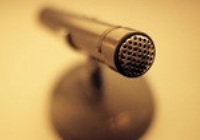At its July 13 open meeting, the Federal Communications Commission (FCC) voted to revise and clarify its rules for wireless microphone operations in the TV broadcast spectrum. The agency's action proposes permitting "certain qualifying professional theatre, music, performing arts organizations, and similar organizations" to obtain Part 74 licenses that would allow them to register their frequencies in a database that would provide interference protection.
PAA member Theatre Communications Group recently published a statement on what this proceeding means for the performing arts field: http://bit.ly/2uemogz
Previously, in August 2015, the FCC ruled that only entities using 50 or more microphones or wireless devices could be licensed to register for interference protection. That threshold excluded most nonprofit performing arts organizations. This new proposal could open the door for entities using less than 50 microphones to obtain a license, provided that applicants demonstrate "need and requisite professional ability" to operate in the bands where they would register their frequency. Once the Further Notice of Proposed Rulemaking is published in the Federal Register with deadlines, PAA and its Member Organizations will seek comments from the field. Please stay tuned for action needed soon! You can read the full announcement about the FCC's proposal here on its website.


